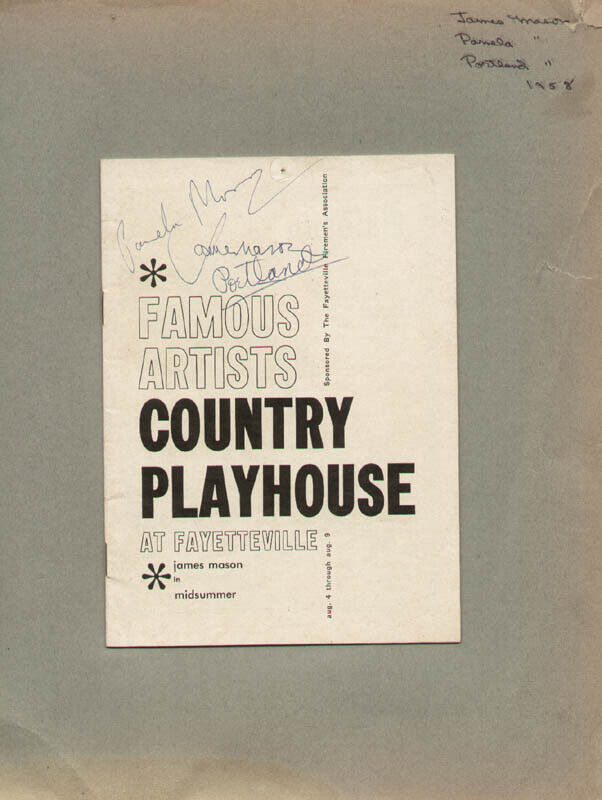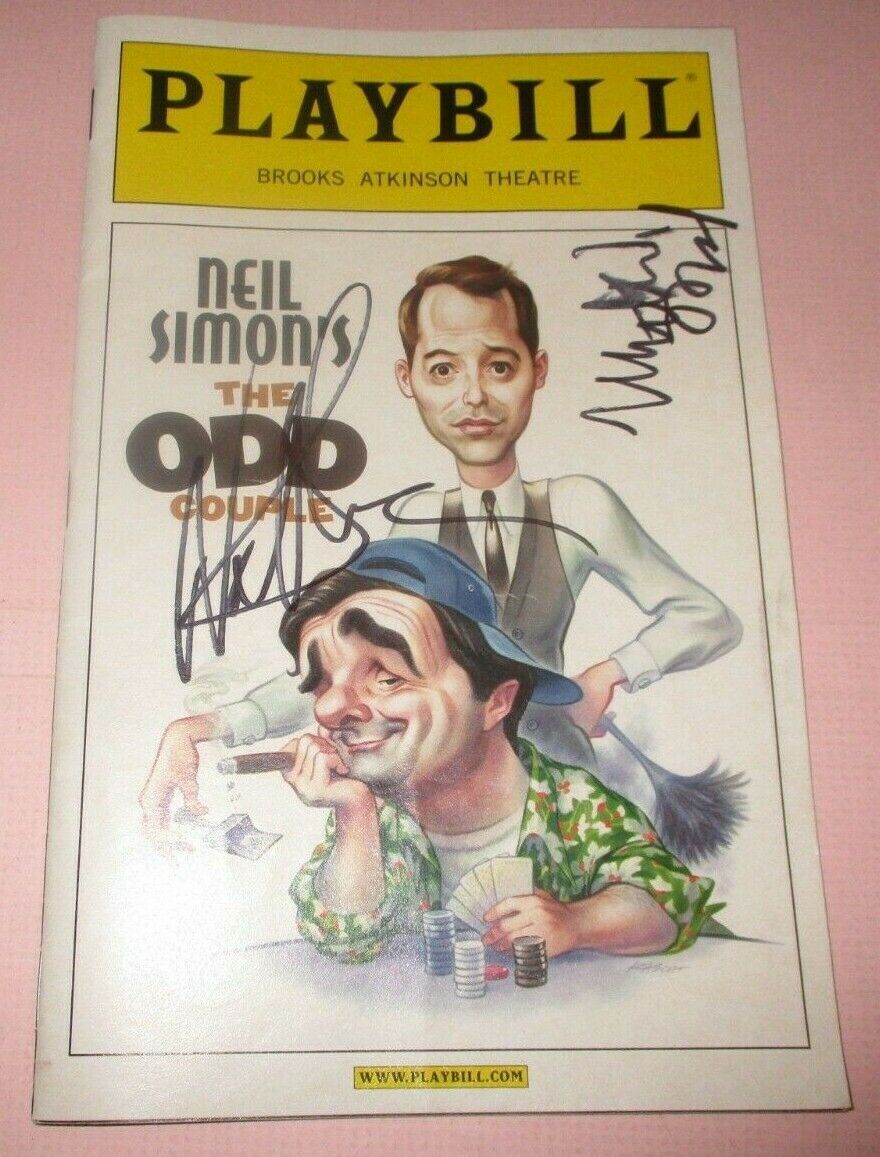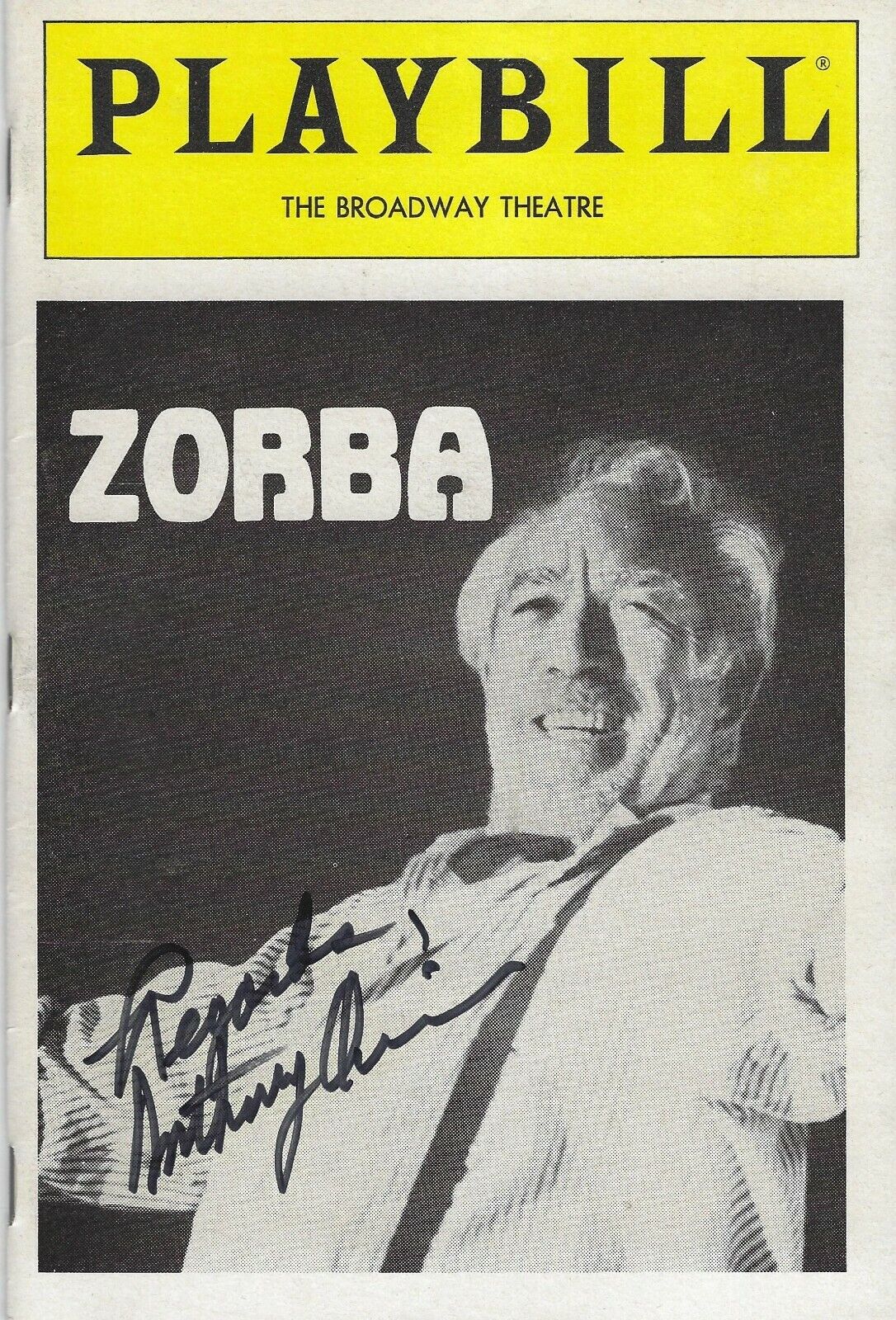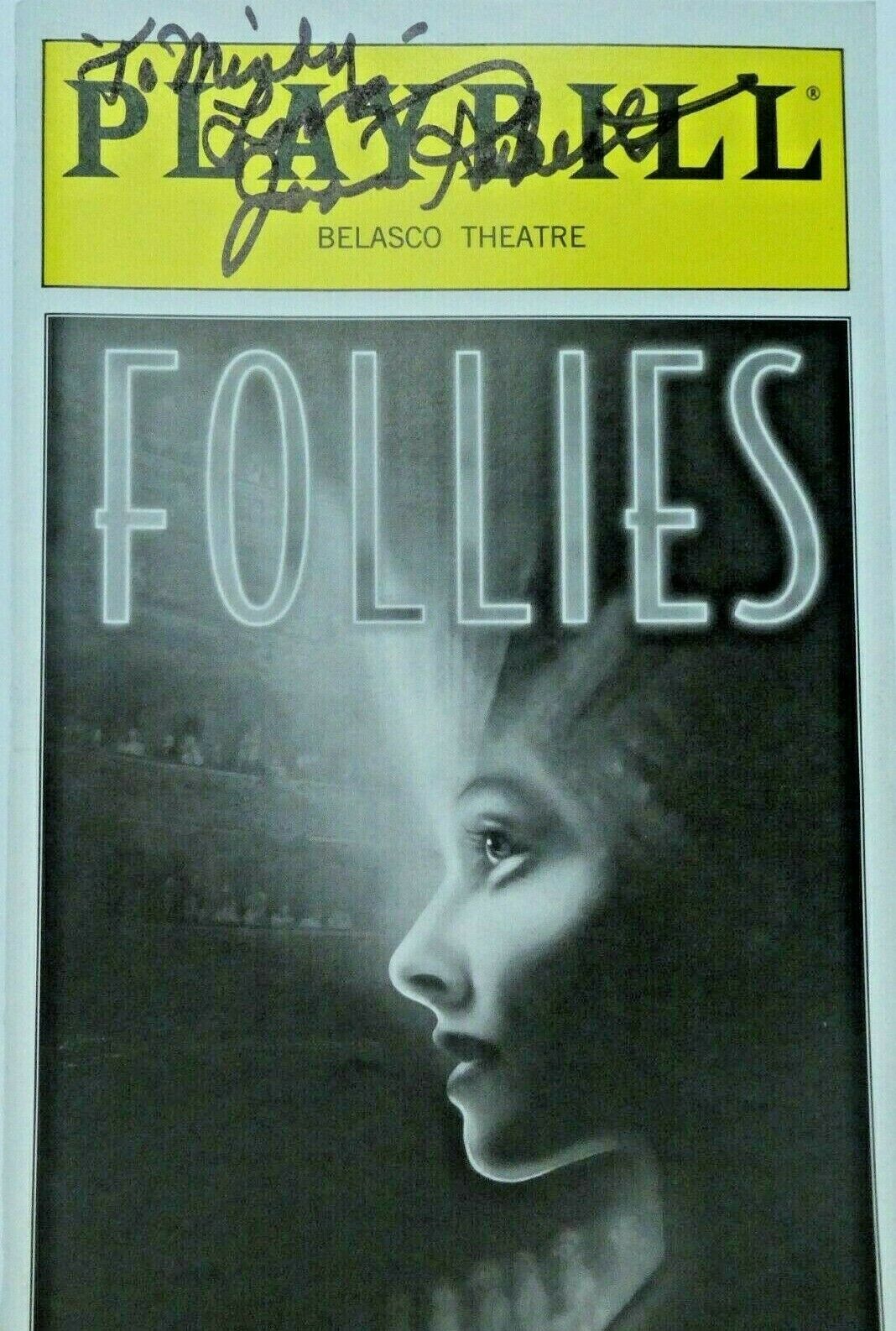-40%
*THEATRE GENIUS GORDON CRAIG ELLEN TERRY'S SON 1890 AUTOGRAPH LETTER + PHOTO*
$ 263.99
- Description
- Size Guide
Description
A charming original 1890 autograph letter with good content written by the young theatre genius Gordon Craig. Dimensions six and three quarters by four and a quarter inches. Light wear and light fold otherwise good. Craig was Ellen Terry's son and a protege of Henry Irving and the longtime companion of Isadora Duncan. Together with a modern photo of Gordon Craig and his mother Ellen Terry circa 1890. Dimensions six by four inches. Perfect for matting and framing. See Gordon Craig's extraordinary biography below.Light wear otherwise good. Autograph dimensions four and a half by three and a half inches. See Gordon Craig's extraordinary biography below.
Shipping discounts for multiple purchases. Inquiries always welcome. Please visit my other eBay items for more early theatre, opera, dance, film and historical autographs, photographs and programs and great actor and actress cabinet photos and CDV's.
From Wikipedia:
Edward Henry Gordon Craig
CH
OBE
(born
Edward Godwin
; 16 January 1872 – 29 July 1966), sometimes known as
Gordon Craig
, was an English
modernist
theatre practitioner
; he worked as an
actor
,
director
and
scenic designer
, as well as developing an influential body of theoretical writings. Craig was the son of actress Dame
Ellen Terry
.
The
Gordon Craig Theatre
, built in Stevenage (the town of his birth), was named in his honour in 1975.
The
illegitimate
son of the architect
Edward Godwin
and the actress
Ellen Terry
,
[1]
Craig was born Edward Godwin on 16 January 1872 in Railway Street,
Stevenage
, in
Hertfordshire
, England, and
baptised
at age 16 as Edward Henry Gordon. He took the
surname
Craig by
deed poll
at age 21.
[2]
Craig spent much of his childhood backstage at the
Lyceum Theatre
, where his mother was the leading lady to actor
Sir Henry Irving
. Craig later wrote a vivid, book-length tribute to Irving. Craig's sister was
Edith Craig
.
In 1893 Craig married Helen Mary (May) Gibson, with whom he had five children: Philip Carlisle (born 1894), Rosemary Nell (born 1894), Henry Edward Robin (born 1895), John (born 1896) and Peter (born 1897).
[3]
He met Elena Meo, a violinist, daughter of artist
Gaetano Meo
, in 1900, and they had three children together: Ellen (1903–1904), Nell (1904–1975),and
Edward
(1905–1998). Craig lived with Elena Meo and their two surviving children on and off, in England and Italy. May Gibson Craig would not consent to a divorce until 1932, after Craig and Elena Meo had permanently separated. Craig fathered other illegitimate children: a daughter with actress Jess Dorynne, Kitty; a daughter with dancer
Isadora Duncan
, Deirdre Beatrice (1906–1913), who drowned at the age of seven with another of Duncan's children, Patrick Augustus, and their nanny; a son, Davidino Lees (1916–2004), with poet Dorothy Nevile Lees and a daughter with his secretary/translator Daphne Woodward.
[4]
Craig lived in straitened circumstances in France for much of his life and was interned by German Occupation forces in 1942. He died at
Vence
, France, in 1966, aged 94.
[2]
Career
Further information:
Moscow Art Theatre production of Hamlet
Craig as
Hamlet
,
Olympic Theatre
, 1897
Craig asserted that the director was "the true artist of the theatre" and, controversially, suggested viewing actors as no more important than
marionettes
. He designed and built elaborately symbolic sets; for instance, a set composed of his patented movable screens for the
Moscow Art Theatre production of
Hamlet
. He was also the editor and chief writer for the first international theatre magazine,
The Mask
.
[5]
He worked as an actor in the company of
Sir Henry Irving
, but became more interested in
art
, learning to carve wood under the tutelage of
James Pryde
and
William Nicholson
. His acting career ended in 1897, when he went into
theatrical design
.
Craig's first productions,
Purcell's
Dido and Aeneas
,
Handel's
Acis and Galatea
(both inspired and conducted by his lifelong friend
Martin Shaw
, who founded the
Purcell Operatic Society
with him to produce them), and
Ibsen
's
The Vikings at Helgeland
,
were produced in
London
. The production of
Dido and Aeneas
was a considerable success and highly influential in reviving interest in the music of Purcell, then so little known that three copies of
The Times
review were delivered to the theatre: one addressed to Mr Shaw, one to Mr Craig, and one to Mr Purcell. Craig concentrated on keeping his designs simple, so as to set-off the movements of the actors and of light, and introduced the idea of a "unified stage picture" that covered all the elements of design.
After finding little financial success in Britain, Craig set out for Germany in 1904. While there, he wrote one of his most famous works, the
essay
The Art of the Theatre
(later reprinted with the title
On the Art of the Theatre
). In 1908, Isadora Duncan introduced Craig to
Konstantin Stanislavski
, the founder of the
Moscow Art Theatre
, who invited him to direct
their famous production of
Hamlet
with the company, which opened in December 1911. After settling in
Italy
, Craig created a school of theatrical design with support from
Lord Howard de Walden
, the Arena Goldoni in Florence. During World War I, he wrote a cycle of
puppet
plays, the
Drama for Fools
[6]
and published a little theatre magazine,
The Marionnette
(1918).
Craig was considered extremely difficult to work with and ultimately refused to direct or design any project over which he did not have complete artistic control. This led to his withdrawal from practical theatre production.
[7]
His later career is remarkable for how little he achieved after the age of forty, during a long period of over fifty years.
He received an
OBE
and in 1958 was made a
Companion of Honour
.
Ideas
Caricature of Craig by
Max Beerbohm
from
A Survey
, published in 1921.
Craig's idea of using neutral, mobile, non-representational screens as a staging device is probably his most famous scenographic concept. In 1910 Craig filed a
patent
which described in considerable technical detail a system of hinged and fixed flats that could be quickly arranged to cater for both internal and external scenes. He presented a set to
William Butler Yeats
for use at the
Abbey Theatre
in Ireland, who shared his
symbolist
aesthetic.
[
citation needed
]
Craig’s second innovation was in
stage lighting
. Doing away with traditional
footlights
, Craig lit the stage from above, placing lights in the ceiling of the theatre. Colour and light also became central to Craig’s stage conceptualizations.
Under the play of this light, the background becomes a deep shimmering blue, apparently almost translucent, upon which the green and purple make a harmony of great richness.
[8]
The third remarkable aspect of Craig’s experiments in theatrical form were his attempts to integrate design elements with his work with actors. His
mise en scène
sought to articulate the relationships in space between movement, sound, line, and colour. Craig promoted a theatre focused on the craft of the director – a theatre where action, words, colour and rhythm combine in dynamic dramatic form.
[9]
Ellen Terry by Craig, from
The Dome
"Dumas Papa" by Craig, 1899
All of his life, Craig sought to capture "pure emotion" or "arrested development" in the plays on which he worked. Even during the years when he was not producing plays, Craig continued to make models, to conceive stage designs and to work on directorial plans that were never to reach performance. He believed that a director should approach a play with no preconceptions and he embraced this in his fading up from the minimum or blank canvas approach.
[10]
As an engraver and a classical artist, Craig found inspiration in
puppets
and
masks
. In his 1910 article "A Note on Masks," Craig expounds the virtue of using masks as a mechanism for capturing the audience’s attention, imagination and soul. "There is only one actor – nay one man who has the soul of the dramatic poet, and who has ever served as the true and loyal interpreter of the poet," he proclaimed, and "this is the marionette."
[11]
On the Art of the Theatre
(1911) is written as a dialogue between a Playgoer and a Stage Director, who examine the problems of the nature of stage directing. Craig argues that it was not dramatists, but rather performers who made the first works of
drama
, using action, words, line, colour and rhythm. Craig goes on to contend that only the director who seeks to interpret drama truly, and commits to training in all aspects of dramatic art, can restore the "Art of the Theatre."
[12]
Maintaining that the director should seek a faithful interpretation of the text, Craig argues that audiences go to the theatre to see, rather than to hear, plays. The design elements may transcend reality and function as symbols, he thought, thereby communicating a deeper meaning, rather than simply reflecting the real world.
On 29 June 1908 the Polish theater director, playwright, and theoretician of drama
Leon Schiller
initiated a correspondence with Craig. Together with his letter Schiller sent Craig, in
Florence
, his essay, "
Dwa teatry
" ("Two Theaters"), translated into English by Madeline Meager. Craig responded immediately, accepting the essay for his magazine,
The Mask
.
[13]
This was the beginning of a productive collaboration between the two prominent theater directors, who introduced each other's theoretical writings to foreign readers.
[14]
Archive
One of the largest collections of Edward Gordon Craig's papers is held at the
Harry Ransom Center
at the
University of Texas at Austin
. The 32-box collection includes Craig's diaries, essays, reviews, notes, manuscripts, financial records, and correspondence.
[15]
Over 130 personal photographs are present in the archive.
[16]
The Ransom Center's art holdings including some of Craig's woodblocks from the Cranach Press
Hamlet
as well as proof prints made during production of the book. The center's library holds over 300 books from Craig's personal collection.
[17]
In addition to the archive of Edward Gordon Craig, the Ransom Center holds important holdings relating to Craig's mother
Ellen Terry
, as well as the archive of his son
Edward Carrick
.












